How to Use Monday.com for Product Management
Product management can be a complex process, and unless you want to frustrate every single member of your product team, you need to use a reliable project management tool like Monday.com to streamline the whole thing from A to Z and ensure a successful product management process.
In this article, I’ll help introduce you to the different stages of product management and how the Monday.com product management solution can provide a helping hand throughout each of them.
Why Do You Need a PM Tool to Build a Product?
A project management tool enhances the efficiency and effectiveness of your projects with a wide range of templates, dashboards, and tools, enabling your team to stay organized and meet demanding project requirements seamlessly.
Using project management software like Monday.com, you can customize your product management process in a way that aligns it with your overall product strategy and meets your development team’s unique needs. Additionally, a work management platform enables you to streamline task management, notifications, and workflow integrations by automating them with popular tools like Slack or GitHub.
PM tools also make online team collaboration a breeze. With online project management software, you can unify your entire organization on a collaborative platform that synchronizes across departments, promoting effective communication and ensuring alignment among all teams.
Stage One: Understanding Customer Needs
The first step in the product development process is to find out what your customers are looking for in your future product. Here, you can utilize behavioral analytics, customer surveys, and competitor analysis to analyze your target market’s data.
Track your users’ online behavior using social listening, review sites, forum and social media discussions, and session replays. Learn what your potential customers think of your competitors’ products and what you can do to make your product stand out to them.
On Monday.com, you can create a buyer’s persona for your target market using a market segment template to document your ideal customer’s pain points, needs, demographics, and more.
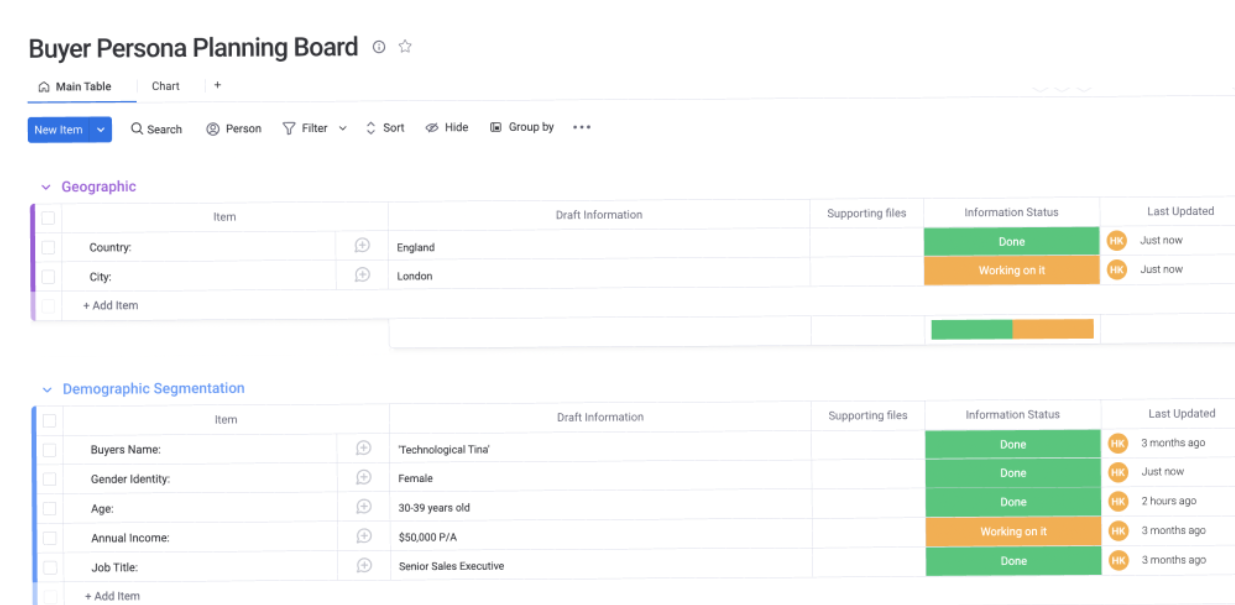
As a product manager, understanding how users behave across channels is crucial to learning what they need and why. You can also gain more in-depth insights about how to delight customers by reaching out to them.
Once you’re confident in your research conclusions, the next step is to start brainstorming product ideas.
Stage Two: Generating New Ideas
The goal of this stage is to generate ideas for products or services that your company could offer and start planning for each of them and assess their relevance and worthiness.
New ideas should primarily be data-driven based on the insights you’ve collected from the first stage. However, something like your own experience can also play a crucial role.
Ideally, the ideas should revolve around solving your customers’ problems. You can use a word mind map on Monday.com to brainstorm ideas with your team in a collaborative, real-time work environment.

Once you’ve narrowed down your ideas into a few ones that you can work on, you need to plan a course of action for each of them, as well as identify the key personas and user stories for your product.
This will help you understand what you’re building and create a better product that addresses your customers’ pain points and fulfills their goals. Next, you need to develop a product roadmap to facilitate feature prioritization and validation. This can be a theme-based roadmap, where you create top-level themes of the product instead of focusing on specific features. For each theme, you need to set measurable goals for your team to direct their efforts effectively.
Using Monday.com’s product roadmap template, you can gain a high-level overview of your team’s objectives and the different tasks that need to be completed on time to achieve those goals.
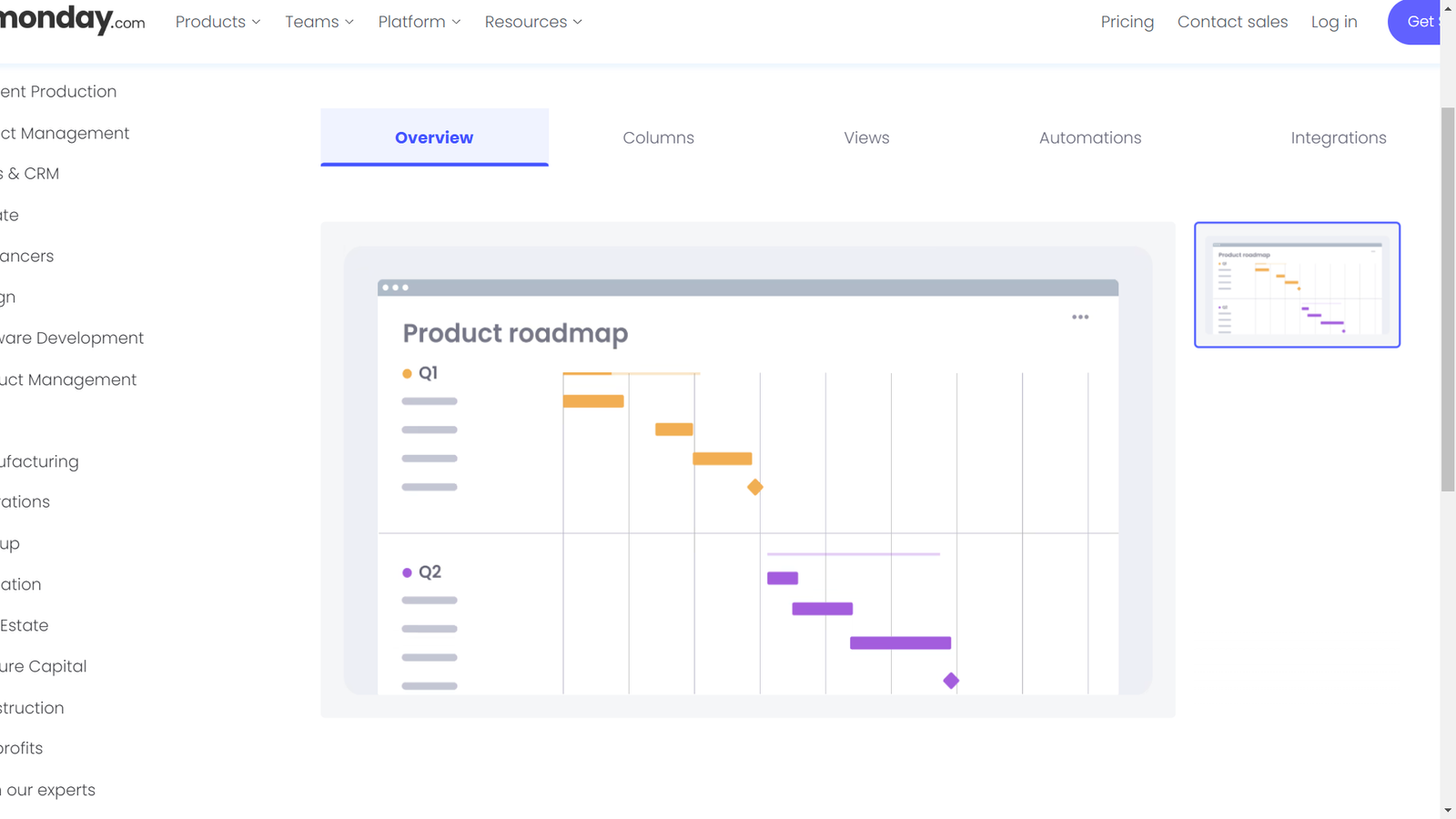
It basically serves as a multi-functional tool that supports brainstorming, development, and clarifying responsibilities and accountability.
Stage Three: Prototyping
Prototyping involves creating a mockup or a working model of the product before its final launch. With a prototype, you’ll be able to test the product and collect feedback to aid the development stage, as well as settle on the product’s final design in terms of functionality and user experience.
Throughout the prototyping phase, your goal is to create a Minimum Viable Product (MVP). An MVP is a basic version of the product that has just enough features for early adopters to try. This way, you can save time and resources by identifying problems faster and more accurately before the product launch.
On top of that, prototyping can help you with feature prioritization. By collecting feedback from early customers, you’ll be able to assess the importance of each feature individually to decide whether it should be included in the final product or not.
There are two models that can make it easier to prioritize features: Product Tree and RICE.
As its name implies, the Product Tree framework visualizes product development in a tree-shaped illustration, where different features support the growth of the product. The trunk is the core features and the roots serve as the infrastructure, while the leaves represent your ideas. The branches visualize the product’s functionality (what it can do). This will help you eliminate non-essential features.
On the other hand, the RICE (Reach, Impact, Confidence, Effort) model quantifies and measures different parameters of your ideas as follows:
Reach: Potential number of customers the feature may appeal to.
Impact: evaluates the relevance and significance of the feature on your product or company.
Confidence: Level of certainty or data that supports the importance of the idea or feature.
Effort: Quantifies the time and resources required to realize the idea into a functional product feature.
On Monday.com, you can use custom formulas to create a formula that calculates the RICE score for each feature.
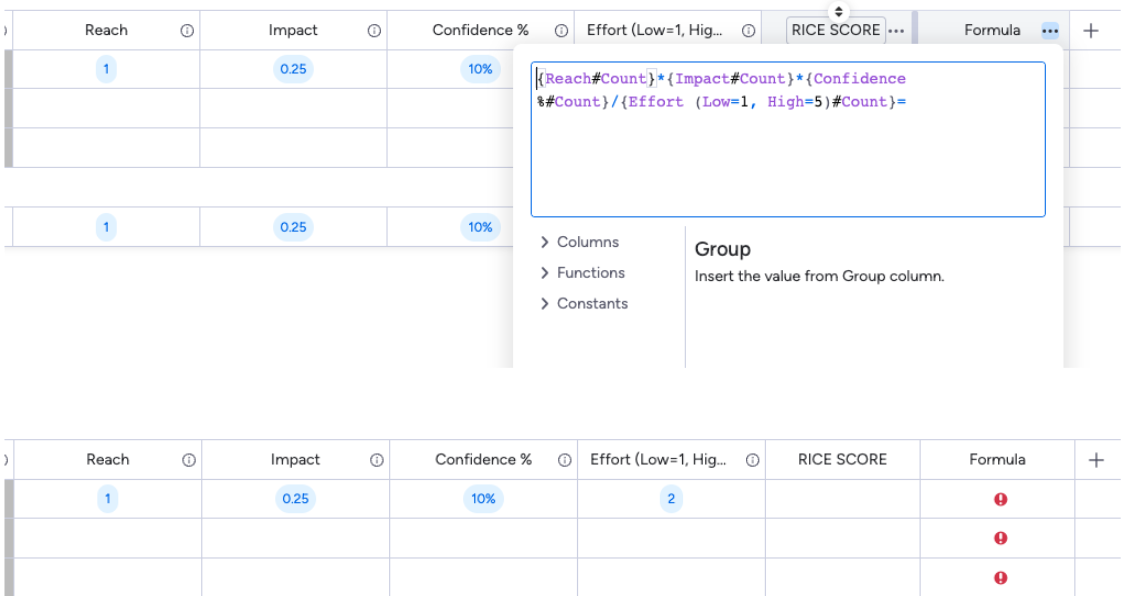
Another good practice is to use a Kanban board to filter through ideas.
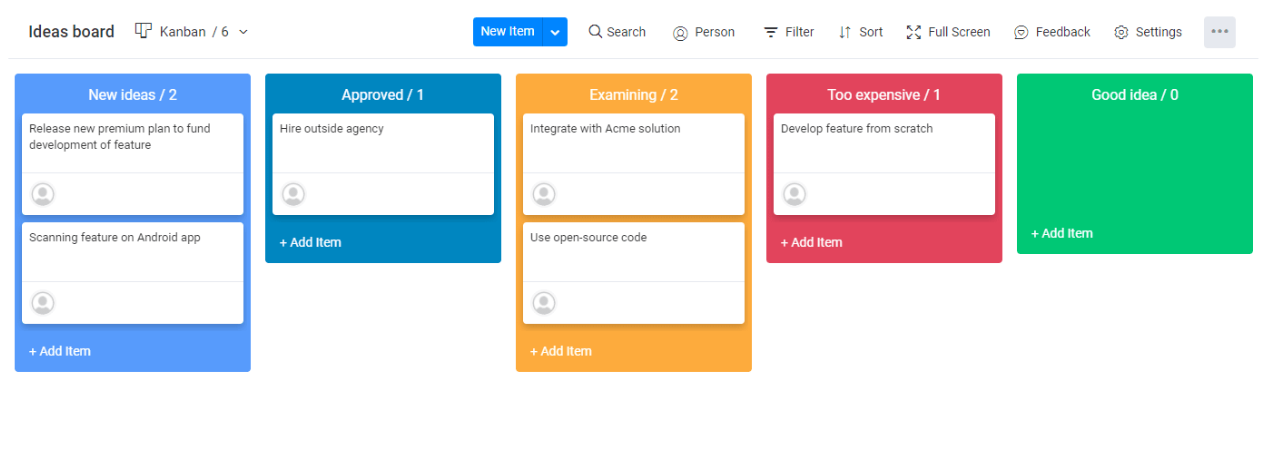
Stage Four: Validation and Delivery
The delivery stage in the product development lifecycle is a representation of all the hard work your team has put into the product management process.
During the delivery stage, the main concern is to review, validate, and approve the product, including all of its features, for either a beta launch or a public product launch, depending on the strategy you and your team see fit.
Ensuring a smooth product delivery is all about setting milestones and goals that you can use to benchmark your product’s performance and general public satisfaction with it.
Additionally, collecting customer feedback and analyzing user data should help you understand how your product is performing and whether there’s something that can be done to improve it.
Using Monday.com, you can A/B test two iterations of your product in its beta phase. It basically splits your audience into two, where each group of users use only one of your prototype versions. Then, you can easily determine which of them is better from user feedback and analytics.
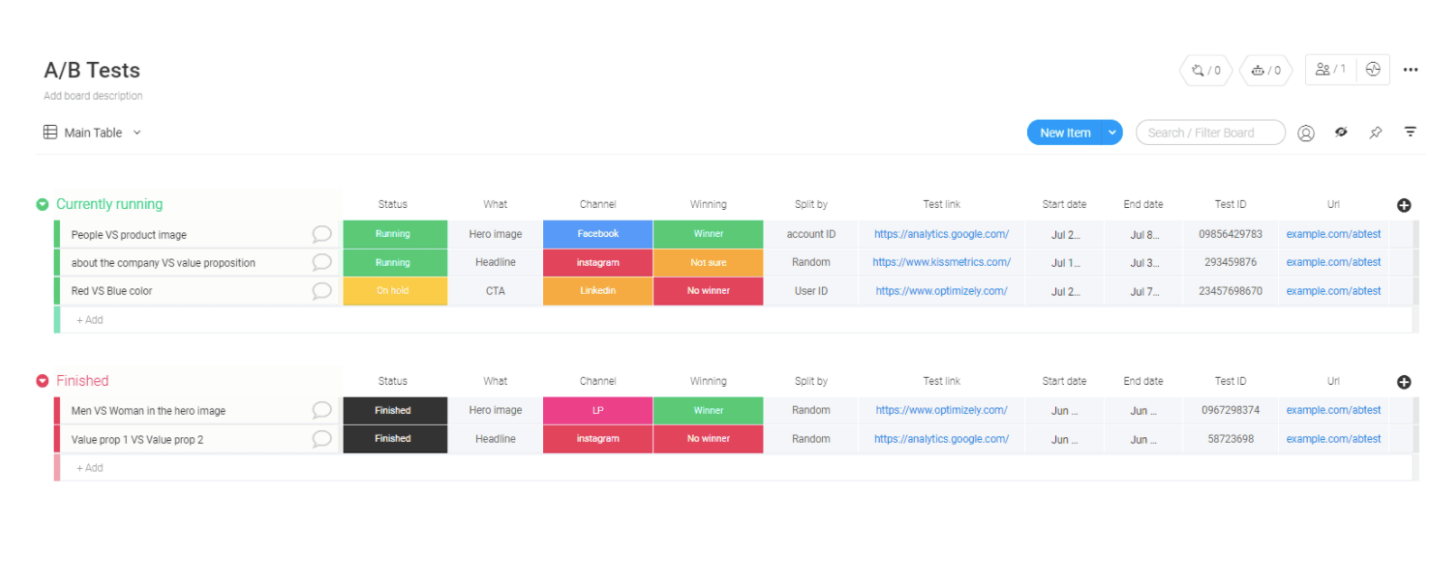
In terms of data analysis best practices, it’s vital to focus on determining and measuring Key Performance Indicators (KPIs). These KPIs could include metrics such as conversions, product usage time, customer support requests, time to value, and free trial sign-ups. On Monday.com, you can effectively measure your KPIs and analyze your product performance data with KPI dashboards.
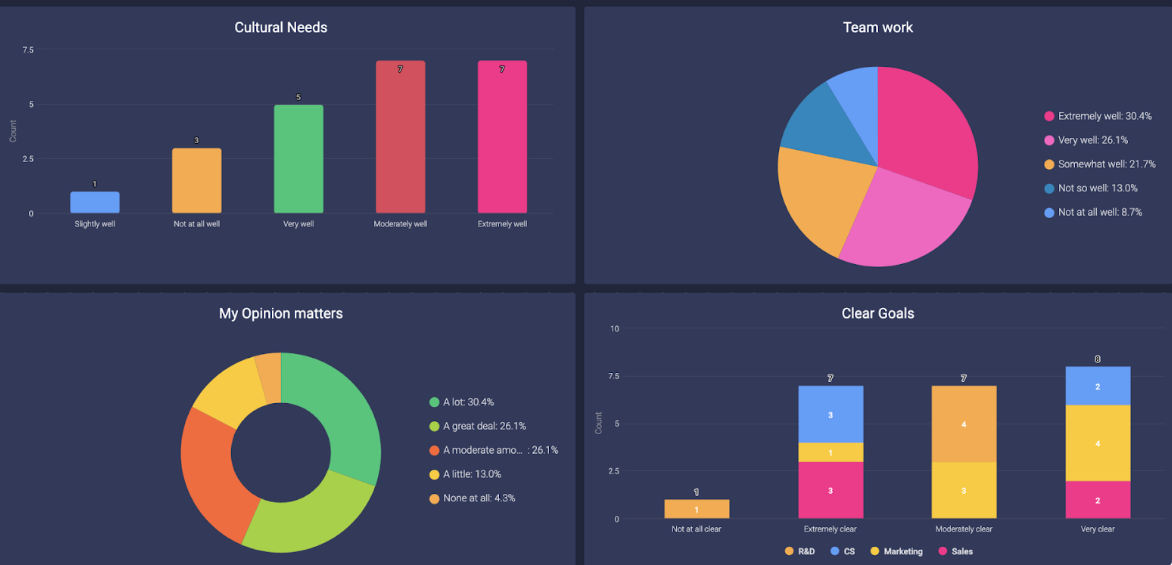
To facilitate effective communication and decision-making within your team, you can also utilize Monday.com to create a metrics dashboard accompanied by supporting graphs to provide your team with insights into how users are interacting with the new product or features. This enables them to take action and make informed decisions that can enhance user engagement, revenue generation, and customer retention.
Final Words
Alright, now you should be able to use Monday.com to streamline your product management process.
Throughout the four stages of product management, you’ll learn that Monday.com has a wide range of templates and collaboration tools that can make each step in the process more organized, accessible, and decision-making-friendly.







